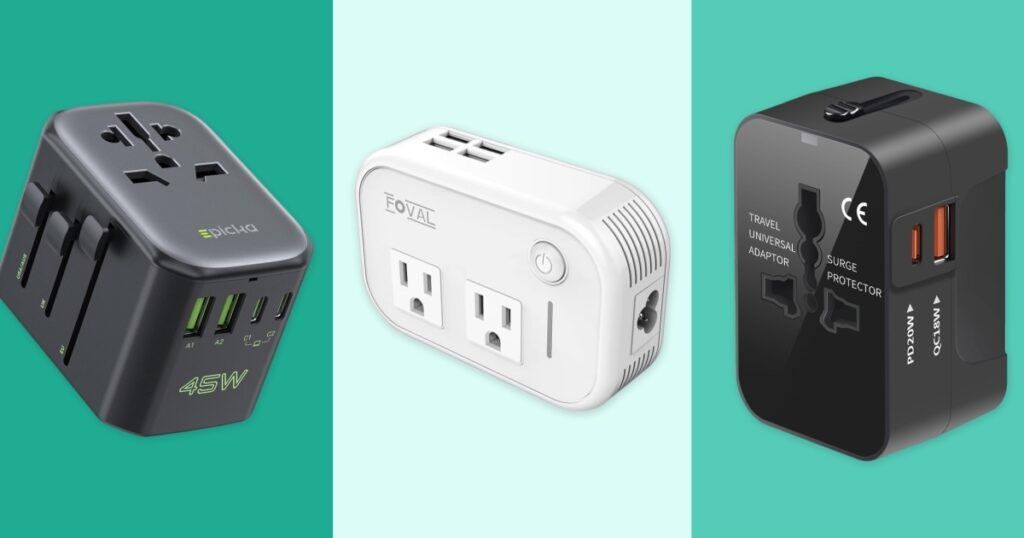
Let’s be real: no one wants to worry about plug types or voltage conversion on vacation. That’s why you need a great travel adapter — with the right model, you can plug in your chargers and electronics like you normally would at home.
That’s why I spoke with electronics experts: to better understand how adapters, voltages and electricity work. With their advice in mind, we selected the best travel adapters for your next big trip.
What is a travel adapter?
Travel adapters typically come in two shapes: plug adapters and universal adapters.
In America, plug adapters have electrical prongs on one side and two or three pronged U.S. slots on the other. If you are traveling to the U.K., for example, your adapter will plug into rectangular-shaped U.K. outlets, and have slots where you can plug your two or three pronged U.S. devices into the adapter.
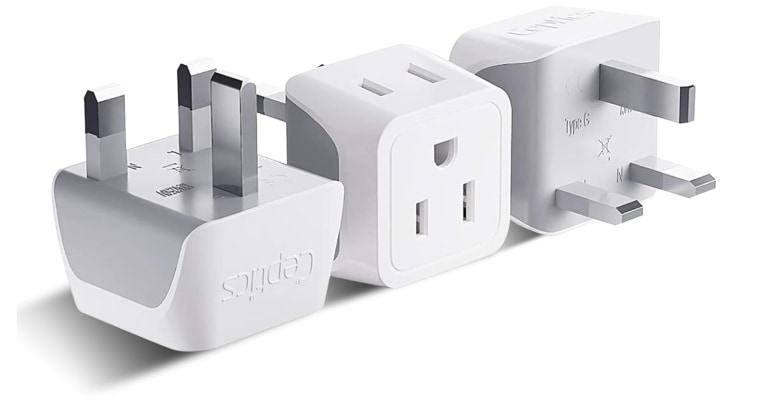
Universal adapters contain multiple plug adapters in one base. Typically, different electrical prongs slide in and out of the base via levers or buttons.
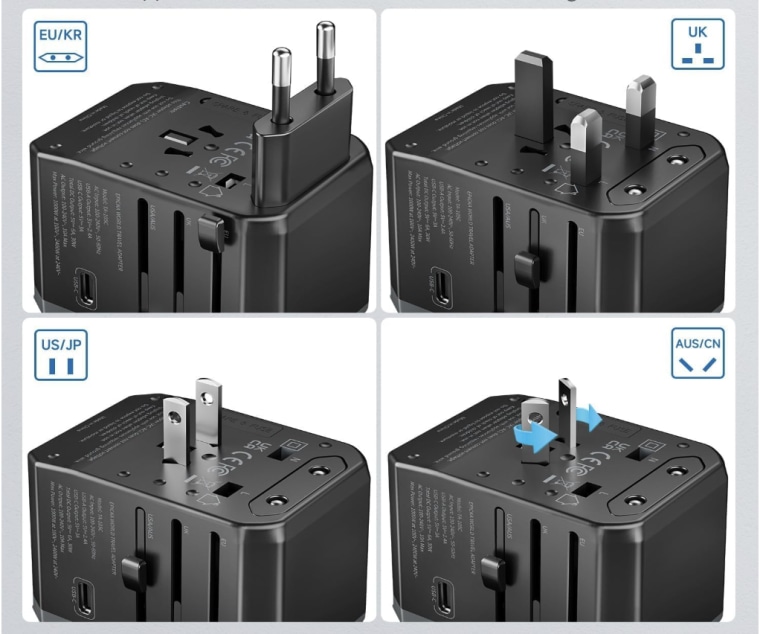
Travel adapters are typically intended to charge electronics like smartphones, laptops, headphones and portable batteries, says Sandra Miller, product manager at Ceptics, a travel adapter manufacturer.
How we picked the best travel adapters
We spoke with electronics experts and asked NBC Select staffers about their experience using travel adapters. We selected products that met the following criteria:
- Convenience: A good travel adapter should just work — you shouldn’t have to think about it. We favored options with multiple regions and different charging options like USB-C and USB-A.
- Power: Travel adapters with fast charging make it easier to charge devices like smartphones and earbuds quickly, so you can get moving sooner.
- Price: We highlighted products across different price points, including small adapters that cost less than $15 and larger converters costing less than $50.
Want more from NBC Select? Sign up for our newsletter, The Selection, and shop smarter.
The best travel adapters in 2025
Most of our top picks come from established travel adapter brands like Epicka and Ceptics, including one option we’ve taken all around the world.
Editors’ pick: Epicka Pulse 45W Universal Travel Adapter
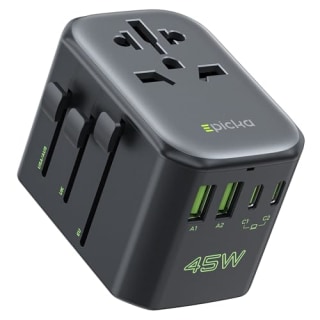
What we like
- Fast charging
- USB-C and USB-A ports
I’ve used Epicka travel adapters on my international trips for years. They’ve been in France, Italy and the U.K. and have always charged my small electronics perfectly. NBC Select commerce editor Lindsay Schneider recently took this one to Paris — it charged all her family’s gadgets without issue.
It has a main 3-prong plug plus two USB-C and two USB-A ports along the bottom, meaning you can easily charge multiple devices at the same time. This model has faster power delivery and better USB port options than our previous top pick from the brand.
Regions: EU, U.K., U.S., AU | Ports: 3-prong power plug, USB-C (2), USB-A (2) | Voltage range: n/a, does not convert voltage
Budget pick: Mingtong Universal Travel Adapter
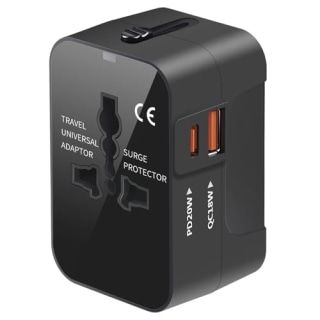
What we like
- Competitive price
- USB-C and USB-A ports
This is a low-priced universal travel adapter that still has all the necessities: sliding adapter plugs, multiple USB-ports and fuse protection. The USB-C port can fast charge at up to 20W, not quite as fast as our editors’ pick, but still enough to fast charge your smartphone and earbuds.
Regions: EU, U.K., U.S., AU | Ports: 3-prong power plug, USB-C (1), USB-A (1) | Voltage range: n/a, does not convert voltage
Most portable: Ceptics Adapter Plug Set
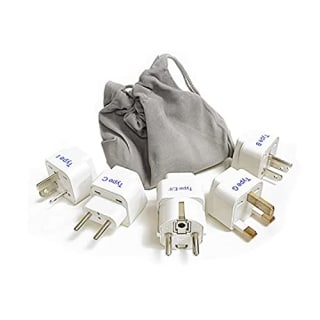
What we like
- Small and easy to pack
- Competitive price
Individual plug adapters can be useful if you are traveling ultralight. This top-rated set includes five different plugs for countries like the U.S., the U.K., and Australia. Each plug is labeled with the countries and continents you can use it in. Most of the plugs have a ground port which helps to protect your devices against power surges, according to the brand.
Regions: EU, U.K., U.S., AU | Ports: 3-prong power plug | Voltage range: n/a, does not convert voltage
Voltage converter: Foval Travel Voltage Converter

What we like
- Converts voltage to US levels
- Two 3-prong outlets
Consider this converter If you are bringing larger devices that will need their voltage adjusted while abroad — think electric shavers and curling irons. This voltage converter adjusts incoming electricity to fit the 110 to 120-volt requirement for U.S. electronics to work properly. It can power devices with up to 230 watts of energy — check your device to make sure it uses less than 230 watts.
The converter has fans built in that prevent overheating and short-circuiting, according to the brand. It has multiple USB ports and two power outlets, making it a good option if you need to charge multiple devices at the same time. It comes with four different plug types and a detachable power cable.
Regions: EU, U.K., U.S., AU, IT | Ports: 3-prong power plug (2), USB-A (4) | Voltage range: 110V — 220V, converts voltage down
How to shop for a travel adapter
To make sure you buy the right adapter for your trip, it’s important to check what kind of electrical plug is used in your destination. It’s also a good idea to contact the place you’ll be staying to ask what kind of outlets they use, says Carl Prouty, the technologist at Abt, a national electronics and appliances retailer based in Glenview, Illinois.
What kind of travel adapter do I need?
There are over a dozen types of common plugs used across the world, according to the International Electrotechnical Commission (IEC), a global not-for-profit organization that works to improve international electrical trade and innovations. Each plug type is given a letter depending on which regions they’re compatible in.
Many countries share the same plug type — type C plugs, for example, are used across most of Europe. Some countries use different plug types depending on where you are in the country and when the electrical outlets were last updated— Italy uses three types (C, L and F).
Travel adapters, including our recommendations, list the regions they support by name or by plug type letter. Below is a world plugs list from the IEC:
- Type A (two prong): North America, Central America, Japan
- Type B (three prong): North America, Central America, Japan
- Type C: Europe (except UK, Ireland, Cyprus and Malta)
- Type D: India, Sri Lanka, Nepal and Namibia
- Type E: France, Belgium, Slovakia and Tunisia among others
- Type F: Germany, Austria, the Netherlands and Spain among others
- Type G: UK, Ireland, Cyprus, Malta, Malaysia, Singapore and Hong Kong
- Type H: Israel
- Type I: China, Australia, New Zealand, Papua New Guinea and Argentina
- Type J: Switzerland and Lichtenstein
- Type K: Denmark and Greenland
- Type L: Italy
- Type M: South Africa, Swaziland and Lesotho
- Type N: Brazil
- Type O: Thailand
Meet our experts
At NBC Select, we work with experts who have specialized knowledge and authority based on relevant training and/or experience. We also take steps to ensure all expert advice and recommendations are made independently and without undisclosed financial conflicts of interest.
- Carl Prouty is a product specialist with over 20 years of experience in consumer electronics sales at Abt. (Since Abt sells travel adapters, we only spoke with Prouty about technical shopping guidance, and did not ask for specific product recommendations.)
- Sandra Miller is a product manager at Ceptics, a travel adapter manufacturer. (Since Ceptics sells travel adapters, we only spoke with Miller about technical shopping guidance, and did not ask her for specific product recommendations.)
Why trust NBC Select?
I am a reporter at NBC Select who covers technology and fitness including recent stories on smartwatches, running shoes, over-ear headphones and more. To better understand travel adapters, I spoke with electronics experts about the intricacies of travel adapters and voltage. I also spoke with NBC Select staff about their experience using travel adapters.
Catch up on NBC Select’s in-depth coverage of tech and tools, wellness and more, and follow us on Facebook, Instagram, Twitter and TikTok to stay up to date.
 Latest World Breaking News Online News Portal
Latest World Breaking News Online News Portal






